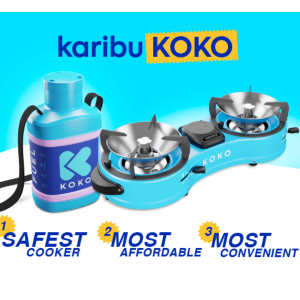
Agriculture
February 3, 2024
GoSun Solar Cooker Sport
Read SolutionImplemented by
GoSun

Updated on February 3, 2024
·Created on July 26, 2020
Artisanal parabolic solar cookers made by women trained through the Women Barefoot Solar Engineers Society.
The Parabolic Solar Cooker is a solar cooker that directly transforms sunlight into heat by concentrating the sunrays through a set of mirrors arranged parabolically, supported by a metallic structure. The Women Barefoot Solar Cooker Engineers Society provides women from developing countries with training to build, install, and maintain parabolic solar cookers for their communities.
The women, also called Solar Mamas, are trained in a six-month Solar Training Program in Rajasthan, where they learn skills such as operation and functioning of different solar cookers and how to use more than 50 different tools. They also learn how to assemble 300 mirrors and entrepreneurial skills.
Target SDGs
SDG 7: Affordable and Clean Energy
SDG 1: No Poverty
Market Suggested Retail Price
$199.55
Target Users (Target Impact Group)
Community
Distributors / Implementing Organizations
Women Barefoot Solar Cooker Engineers Society
Competitive Landscape
Direct competitors include SolSuffit SuniCook, SolSource Solar Cooker, and GoSun Solar Cooker Sport.
Countries
Afghanistan, Argentina, Brazil, India, Mexico, Nigeria, South Africa, Tanzania
Manufacturing/Building Method
The solar cookers are assembled using Scheffler mirrors mounted in a metallic structure to concentrate the sunlight at the cooktop. Each cooker, composed of more than 300 mirrors, weighing 130kg is built using precise measurements by bending, welding, and cutting in a month’s time.
Intellectural Property Type
Open-source
User Provision Model
The solar cookers are built, installed, and maintained by women trained in a six-months course provided by the Women Barefoot Solar Engineers Society.
Distributions to Date Status
Unknown
Forced or passive
Passive
Power output in full sunlight (W)
N/A
Max temperature (°C)
110 °C
Pot capacity (L)
15 – 20 L
Oven volume (L)
N/A
Pot type
Flat bottom
Time to boil (min/L)
10 min/L
Design Specifications
The solar cooker is composed of one solid frame and a cooking box, made of materials locally available. The reflector frame is made of six solid pieces of 1.22 x 1.2 x 0.63 m, where the mirrors are attached to wires. Behind the reflector a geological clock system makes the frame rotate following the sun. Only one adjustment has to be done in the morning and the clock system allows to track the sun all day, rotating the cooker every 3.23 min.
Specifications:
Technical Support
The women trained by the WBSCES are expected to mantain the cookers by themselves.
Replacement Components
All the components of the solar cookers can be found locally as long as a metal shop is available in the community.
Lifecycle
Unknown
Manufacturer Specified Performance Parameters
The WBSCES has seven goals:
Vetted Performance Status
Unknown
Safety
Users should be aware of potential eye damaged caused by long-term exposure to direct sunlight, concentrated in the parabolic solar cooker through the mirrors. Although most parabolic cookers have their focal point located under the pot, the use of sunglasses near the cookers is recommended. Additionally, it is recommended not to stare at the glare.
Complementary Technical Systems
None
Academic Research and References
G.M., 2017, The ‘Barefoot Model’ of economic empowerment in rural Rajasthan, Journal of the Indian Ocean Region, 13:1, 54-75.
Lynn-Catrill, J., 2015, Solar cookers – a step towards sustainable development: an analysis of the impact of solar cooking practices in Ajmer District, India, Norwegian University of Life Sciences, Ås.
Solar Cooking Wiki, 2017, Women Barefoot Solar Cooker Engineers Society, Solar Cookers International
Compliance with regulations
Unknown
Evaluation methods
Unknown
Other Information
A documentary about the Barefoot College Training Program and the Solar Mamas can be found here.
A video showing the functioning of a parabolic solar cooker can be found here.
After completion of the training, the Solar Mamas are provided with a tutorial on cooking with the solar cookers, together with a sample of their product.
Product can be purchased here

Agriculture
February 3, 2024
Implemented by
GoSun

Agriculture
January 31, 2024
Implemented by
Solsource

Agriculture
November 30, 2024
Implemented by
KOKO Networks

Agriculture
January 19, 2024
Implemented by
Solar Street Lights Africa

Agriculture
December 7, 2024
Implemented by
Azuri Technologies

Agriculture
December 31, 2023
Implemented by
BioLite

Agriculture
January 8, 2024
Implemented by
Lifeway Solar

Agriculture
December 7, 2024
Implemented by
Devergy

Agriculture
January 17, 2024
Implemented by
Centro de Desarrollo del Habitat y el Medio Ambiente (CEDES/Habitat)

Agriculture
December 9, 2024
Implemented by
M-KOPA
Have thoughts on how we can improve?
Give Us Feedback
This product reduces dependence on traditional fuels while at the same time protecting the environment and utilizing new energy sources. I like the fact that the parabolic colar cooker is able to be facing towards the sun through the geological clock system, which enhances the absorption of solar energy with just a little bit of manipulation. I think the ‘Solar Mamas’ training program is an excellent initiative that not only equips women with valuable technical skills but also challenges society’s traditional notions of gender roles.